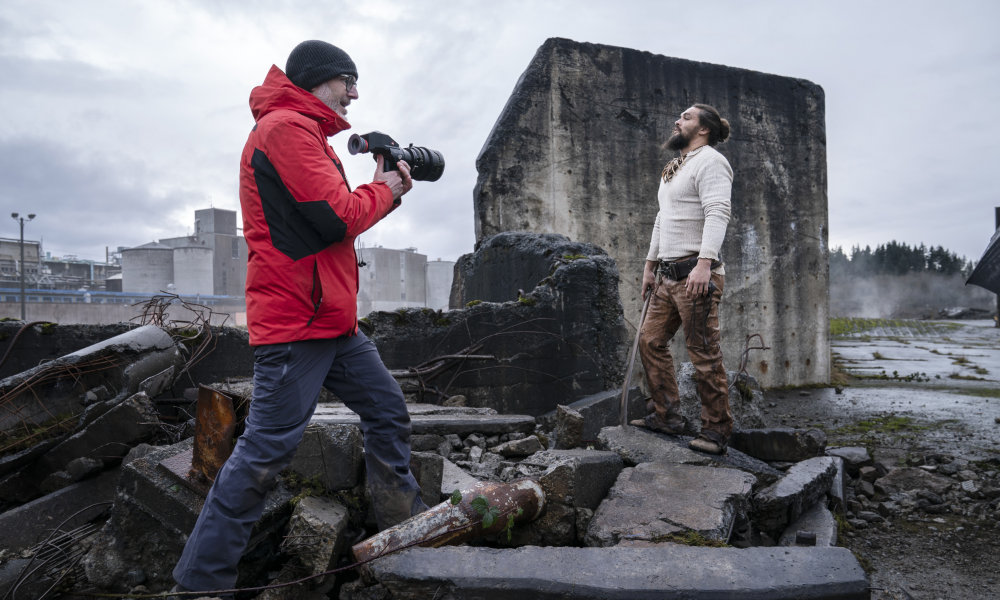Apple’s ‘See’ Spares No Expense in Creating Its Dystopian Future
 Credit: Apple
Credit: Apple
Toggle Dark Mode
It’s beginning to appear that early reports of the amount of money Apple has spent on some of its original television products may have been somewhat exaggerated, however there’s still no doubt that the company is still spending a lot for its flagship productions, not only in getting big-name stars to appear in them, but also in applying its famous attention to detail to make it shows as authentic as possible.
In an interview with Business Insider, Francis Lawrence, the executive producer and director of Apple’s new See sci-fi fantasy series, revealed that while the new show was definitely expensive to produce, the report of a $240 million budget last month by The Hollywood Reporter was actually“blown out of proportion,” and is actually nowhere near the scale of Game of Thrones.
It’s an expensive show. People have thrown around that it’s the most expensive show. I can guarantee you that it’s not. When “Game of Thrones” spent 55 days shooting one battle sequence, I can guarantee you [that was more expensive]. I shot my three episodes in 50 days. So we’re nowhere near the scale of some of those other big-budget TV shows.
Francis Lawrence, executive producer, See
That said, however, it seems that Apple still spared no expense in producing the series, so the lower budget was simply a result that it just didn’t actually cost that much, and of course there’s no sense in throwing money at a show for the sole purpose of deliberately making it more expensive to produce.
Lawrence, who is best known for directing three out of the four Hunger Games movies, and is expected to be returning to Lionsgate to work on the recently announced prequel movie, shared how Apple didn’t hesitate to spend whatever money was necessary to bring a degree of believability and realism to the post-apocalyptic fantasy series including hiring blind consultants and even an evolutionary biologist and a survivalist to help brainstorm ideas for the show.
How long after civilization had vanished does the story take place and what would things look like and what would remain?
Francis Lawrence, executive producer, See
One of the challenges was presenting a dystopian future that would feel authentic, and as Lawrence noted one of the main questions that the team brainstormed, including building a “blindness bootcamp” to work out how everything would fit together from art to props to even the huts in the village and how people would find their way around.
Real Worlds vs CGI Effects
The first five episodes of See were filmed almost entirely on location on Vancouver Island, so Lawrence notes that they didn’t even step on a soundstage until the sixth episode, however even then they returned to the on-location shoots for episodes seven and eight. As a result, CGI effects were only used to augment the real environments, rather than creating new ones, such as making a village look a little bigger, or to age more modern structures to look appropriate for the time period.
The one area where CGI effects were most significantly used was in creating the appearance of blindness in the characters. As Lawrence notes, “it’s too many people over too long a time in real environments” and would have required far too many optometrists to deal with having the actors wear contact lenses, not to mention the risks of eye damage and eye discomfort.
Lawrence said that for now, most of the cast can see, although a couple of members of the main tribe are low-vis and some of the actors in the Queen’s court are blind. The production team tried to find as many blind and low-vis actors as they could, and hope to improve upon that in the second season.
Although See is definitely a premium TV production, Lawrence notes that it doesn’t have the schedule of a feature film, so everything was on a tighter schedule. For example, a battle that might have had two weeks to shoot for a feature film had to be wrapped up in four days for See. Lawrence also notes that the on location shoots, out in nature and the winters of British Columbia, added to the difficulty of shooting the series on such a tight schedule.
The first three episodes of See debuted on Apple TV+ when it launched last week, with the remaining shows expected to arrive on a weekly schedule, beginning this Friday. A second season is also in production, although there’s been no word on when that will actually be released.







